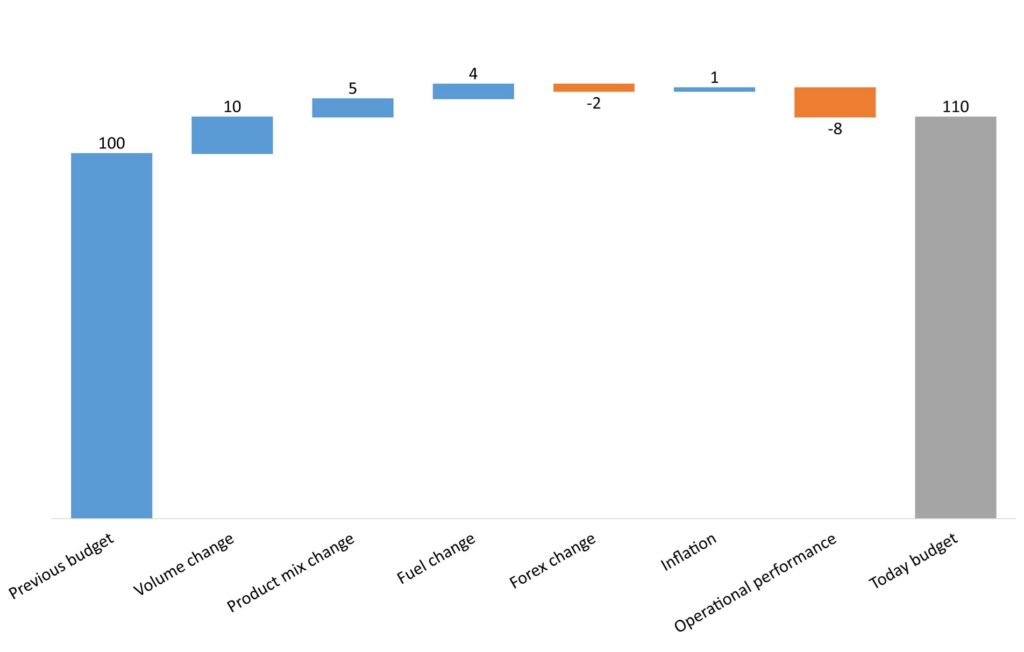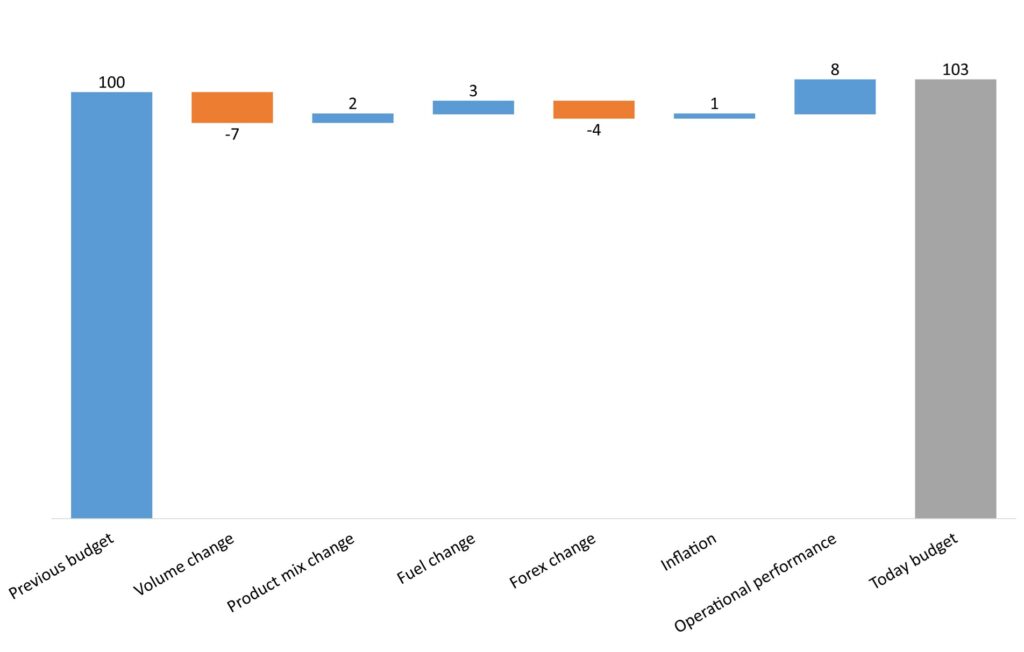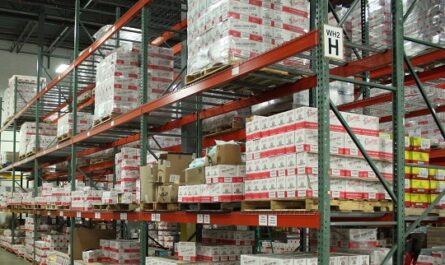In the supply chain, you have to pay a lot of costs to keep things running. You must, of course, keep an eye on and control these costs. Most of the time, you will have to make the money you spend work better. You will have to cut down on the costs of your supply chain. For example, you need to set a goal for how much costs will go down this year compared to last year. The goal is to make more money and help your business grow.
And people are asking for these costs to go down even more now, because the different costs you have to pay keep going up. You have to think hard to keep the business making money.
Price increase? That will be the last option to take.
Reduce quality level? That’s never going to be a choice.
So, you need the right cost-cutting plan to be ready for different price increases over time. And you should compare how well you’re doing at cutting costs to your goals.
Sometimes, this performance of lowering costs will be cancelled out by higher cost increases, like inflation. So, you need to do a little math to figure out how much your cost-reduction is really helping.
Also, is that enough to know that prices will go up or not? How to set the right goals for cutting costs?
This post will talk about this time.
But before we do that, make sure you have also joined the scmguide telegram channel. I share a lot more about supply chain management there, and you won’t want to miss the latest articles from this blog, which are definitely helpful.
Table of Contents
7 cost drivers in the supply chain
The first thing you need to do is figure out what your supply chain’s cost drivers are.
Every business is different, of course. But in general, your supply chain will have 7 cost drivers.
Let’s take each one in turn.
Sales volumes
The first thing that drives costs is definitely the cost of sales. How much you have to spend on supply chain costs will depend on how many items you sell in the next period.
Your variable costs depend a lot on how much you sell, and the amount of these costs depends a lot on how much you sell.
The more sales you make, the more you have to spend on costs.
You might also like:
- How to Make Effective Overtime Planning
- 5 Supply Chain Challenges Before You and How to Overcome Them
Mixing and matching
The cost of each product is different. The cost per unit of each item will be different. So, how your sales plan shows the product combinations will affect how much you have to spend.
If you sell products that cost more per unit than other products, your costs will be even higher. Vice versa.
Any change you make to the products in your sales plan will also change how much you have to spend on them.
Inflation
Inflation is also a factor in whether or not the costs you will need to pay are going up. You have to think about this inflation factor if you want to figure out how much your supply chain operations will cost in the long run.
Prices go up
Everyone, including your supplier, has to deal with price increases. This has a direct effect on your operating costs when it happens.
The price your supplier charges you will start to go up.
Rates of exchange for money
Globalization is happening now. Since many raw materials come from other countries, they must be paid for with foreign currency. Because of this, every time the exchange rates change, it will have an effect on the costs you have to pay, whether that effect is good or bad.
When the value of a foreign currency goes up, it makes sense that the costs you have to pay will also go up. Vice versa.
Fuel
Just like currency values, fuel prices also fluctuate. And whether this change in fuel prices is good or bad, it will have a direct effect on the costs of your supply chain. We can say that everything needs fuel to get where it needs to go, right?
Operational performance
The performance of your operations is a cost driver that is just as important. The costs you have to pay depend directly on how well and efficiently you run your business.
If you can keep your operations running smoothly and efficiently, you can cut down on the costs of running your business.
You might also like:
- What is a Supply Chain Strategy and How to Develop it Effectively
- 9 of the Most Common Reasons Why You Might Have Excess Stock
How to set goals for cost reduction
Now, the most important question is how to cut costs and how much to cut costs in order to reach your goal.
You need to figure out how much the total cost will be based on the sales volume, product combinations, inflation, currency exchange rates, and fuel prices I mentioned above.
Compare these calculations to the budget from the last time period.
You have to figure out why your current budget is different from the budget for the last time period. Find out how much each of the above cost drivers affects your budget as a whole.
Most of the above 7 cost drivers are things you can’t change. In a way, you can only control costs that have to do with how well your business runs.
So, when these costs go up or down and you can’t do anything about it, you can cut your operational costs to make them more effective.
How much needs to be cut?
If you can cut down on cost increases that you can’t stop, that would be great. But if you can’t, you can at least lessen how much the rise in costs hurts your profit.
All you have to do is look at how your business is running now. Look for ways to cut costs or get more done with the same amount of effort. Or, you might be able to avoid spending money you don’t need to.
From the better operating performance, figure out how much you can save by cutting costs. That should be your goal. Make the improvements you’ve planned to get the cost reduction.
You need to make sure that the plan to cut costs is working. Keep an eye on these things and look for other opportunities that might come up.
As an example, here are the results of your budget calculation.

From the graph above, it’s easy to see if your activities to cut costs can cover the increasing costs or not.
Get everyone involved in your supply chain. You can’t cut costs in one area while raising them in another. You have to make sure that the cost reduction happens throughout the entire supply chain.
Watch out for cost-ups
Sometimes, sales volume goes down, product combinations tend to be low-cost products, currency exchange rates go up, and fuel prices go down, but after checking, it turns out that the current budget isn’t as low as it should be. This means that costs are going up because the operating cost isn’t running well or can’t change to meet needs. You need to figure out how to cut those costs.
The graph below gives a general look at situations like this.

Why should you make a goal to reduce costs?
What is clear is that cutting costs directly affects how much money you make.
Second, by setting a cost-reduction goal, you will have to make an action plan to improve the performance of your supply chain operations. So, you won’t just walk around in circles. There will always be ways to get better because there will always be chances to do so.
Conclusion
There’s nothing that can be done to stop the rise in a cost of factors that affect costs. As a supply chain manager, it’s your job to make your supply chain operations more cost-effective so you can cover these rising costs. This will help you keep making money and grow.
One way to do this is to define cost-reduction activities. But also make sure that the goals you set are not too easy and that you have clear ways to reach them.
Also, make sure that all parts of your supply chain work together to reach the same goal.
I hope it helps.
If you thought this article was helpful, please tell your other coworkers about it. Make sure you have also joined the scmguide telegram channel so that you can keep up with the latest blog posts and learn more about supply chain management. You can use any of the articles on this blog for whatever you want, even for money, without having to give credit.

 by
by 

